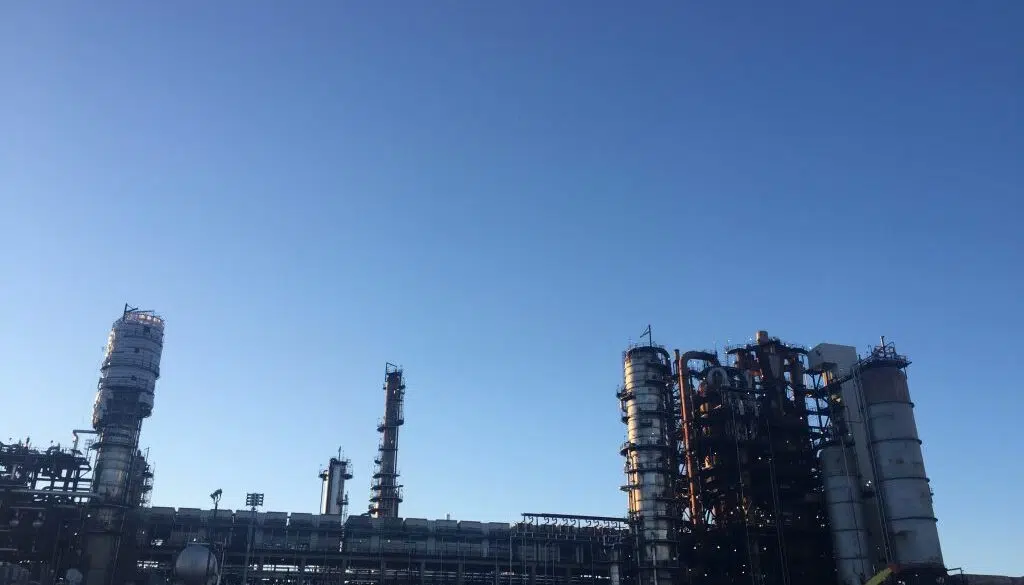The Atlantic Provinces Economic Council (APEC) says strong population growth is the driving force behind an estimated $15 billion in major project spending in the region this year, a 13 per cent jump from 2022.
However, the latest Atlantic Investment Outlook cautions that while the region is growing, more workers will be needed to complete these projects, putting an even bigger strain on housing, healthcare, and other services needed to keep people in the region.
“We definitely had a call to action that we had to deal with the worker shortage in construction,” says report author Patrick Brannon, senior researcher at APEC.
“Moving forward, we’re facing pretty significant shortages in construction right now….if we don’t have housing in place, if we aren’t able to capitalize on hydrogen projects fast enough, then we may lose those opportunities or lose those people from coming to the region.”
APEC’s report identified more than 500 major capital projects in Atlantic Canada at various stages of development with an investment value of $225 billion, an increase of 48 per cent.
Nova Scotia’s growth lead the region in 2023 the report found, with APEC identifying 224 projects with a potential value of $110 billion.
“The total value of Nova Scotia’s Inventory is up about 33 per cent from 2022 due to new wind/hydrogen projects proposed in the province as well as new housing and electricity developments,” the report says. It adds that capital investments in the province are also at an all-time high of $5.3 billion for the year.
Newfoundland and Labrador is seeing $71 billion from 95 major projects this year, while PEI has 71 projects valued at $5.7 billion and New Brunswick has 136 projects totalling $38 billion.
Many of these projects are tied to clean energy and, ironically, to existing population growth, which has seen 120,000 people added to the region in the past two years.
The report finds that the population boom in the region’s seven largest cities — St. John’s, Charlottetown, Halifax, Cape Breton, Moncton, Fredericton, and Saint John — could see project investment exceeding $7 billion by 2024, mostly for housing.
But even with more people in the region, Atlantic Canada is still behind in attracting the exact skill sets it needs to complete these ambitious projects.
In New Brunswick, the Port of Belldune’s Green Energy Hub is one project that will require skilled construction labour for projects like hydrogen production, solar, biomass, and wind energy, among others. With the goal of being operational by 2027, the Port has already signed a green energy deal with the Port of Rotterdam in the Netherlands. The budget for the green energy hub project is estimated to be between $1.2 and $1.5 billion, with the province kicking in $4 million for Port improvements.
And in Nova Scotia, the EverWind project at Point Tupper got approval to be North America’s first green hydrogen facility at a cost of $6 billion funded in part by federal government tax credits. The project is expected to be online by 2025, only 18 months from today.
The report recommends “leveraging all potential solutions for labour, including speeding up immigration, strengthening participation among underrepresented groups, and increasing the adoption of automated technologies.”
Working with post-secondary institutions and industry to develop a pool of talent in these areas is another recommendation.
“If we’re building all these wind turbines to have cleaner electricity, we need electricians,” Brannon says as an example. “We want to see more of a focus on bringing more trades in.”
“We know that automation has to be part of the solution,” he adds. He says repetitive jobs are ones where labour could be freed up by technology.
At the same time this transition to clean energy is happening, oil projects are still in the works in places like Newfoundland, which is still seeing significant investment for projects like the West White Rose oil expansion project among others. The report found that oil investment is expected to reach $2.2 billion in 2023, up from $1.8 billion in 2022, but still down from pre-pandemic investment of $2.6 billion in 2019.
With the shocking announcement from Irving Oil that the company was conducting a strategic review and considering its future, as well as the three-year postponement of the Bay du Nord project, there’s been added uncertainty regarding the long-term prospects for oil in the region.
“There is a role for the offshore oil sector in Newfoundland and for the oil refinery in New Brunswick as we transition,” Branon says. “It’s going to take time to make that transition and there is a need for oil for all kinds of industries … over the next couple of decades.”y
“Newfoundland and Labrador is trying to position itself as an area that’s producing lower emission oil … so it could be one of the later ones standing in terms of oil production. But it’s still uncertain and there is an over-reliance on that sector in the province. And if it does decline more that’s a big, big concern.”
For New Brunswick, the report found that “manufacturing investment is up 18 per cent this year due to a large turnaround project at the Irving Oil refinery this fall” as well as a project at the Saint John pulp and paper mill.
Mining was also identified as an important contributor to this overall investment in the region, in particular in Newfoundland where there will be $1.7 billion invested in mining activity mostly in gold.
Alex Graham is a reporter with Huddle, an Acadia Broadcasting content partner.






Comments